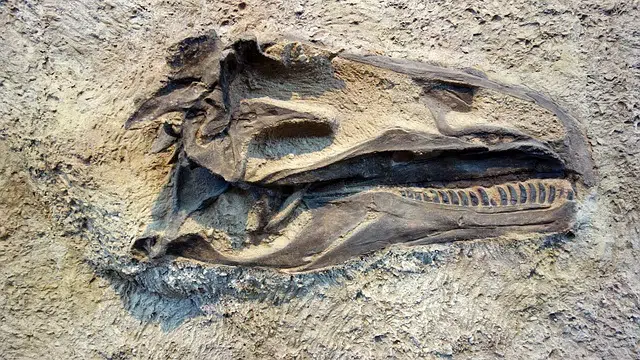
Carbon 14 can be used to calculate the age of a fossil.
Carbon is a chemical element whose atomic number is 6 , which is very abundant in nature and is present in living beings. A radioactive isotope of this element is called carbon 14 , or carbon-14 .
Isotopes are chemical elements that have the same number of protons, but different numbers of neutrons. Protons and neutrons are elementary particles. Radioactive, for its part, is something that has radioactivity : the property of some bodies to emit radiation when they disintegrate.
Carbon-14, which is also often referred to as radiocarbon , is an isotope of carbon that has six protons and eight neutrons. The discoverers of carbon 14 were scientists Sam Ruben and Martin Kamen , who noticed the existence of this element in 1940 .
Carbon 14 in dating
The importance of carbon 14 lies in the possibility of using it for dating ancient objects . This is possible thanks to the so-called law of exponential decay that governs radioactive isotopes.
Cosmic radiation causes carbon-14 to be produced continuously in the atmosphere . This isotope spontaneously transmutes into nitrogen 14 , which mixes with other non-radioactive atoms in atmospheric carbon dioxide. Through photosynthesis , plants absorb the radioactive atom. By eating plants, animals also incorporate the carbon found in plants. Once the living being dies, no more carbon-14 atoms are incorporated into its body, which is why the concentration of the isotope is reduced due to the aforementioned law of exponential decay.
The experts determined that, 5,730 years after the death of a living being , the amount of carbon 14 in its remains is reduced by half. Therefore, by measuring the radioactivity of the remains, it is possible to calculate how much carbon 14 remains and thus determine the date of death.

Carbon 14 has been used to date extracts from the Koran.
Some of its uses
Throughout history, many discoveries have been made using the carbon 14 test. Thus, for example, in the 1980s, the archbishopric of Turin together with the Vatican itself selected three laboratories specialized in that process so that they could determine whether the well-known Shroud of Turin was authentic or not. For this, a small piece was cut from the shroud and divided into three samples.
The result certainly failed to satisfy the expectations of the ecclesiastical authorities at all. And it was determined that the sheet had been woven in the period between the years 1262 and 1384.
In the same way, other discoveries have been made such as two extracts from the Koran dated to the time of Muhammad or the dating of the Neanderthal fossils from the El Sidrón cave (Asturias) to 49,000 years ago, among others.
Problems with carbon 14
Currently, it has become known that different situations are occurring that seriously endanger carbon 14. Thus, for example, experts in the field highlight, above all, what pollution is and also the so-called Suess effect.
The physicist Hans Suess is the one who has established that a distortion is occurring in the amounts of carbon 14 that different organisms have. This has been taking place for approximately two and a half centuries since industrialization was the trigger for this to occur.
